Case Analysis of the Way finding System Design for Waverley Valley Conservation Area, Australia
Case Analysis of the Wayfinding System Design for Waverley Valley Conservation Area, Australia
I. Project Background
Located in the suburbs of Melbourne, the Waverley Valley Conservation Area covers 15 hectares and serves as an important urban ecological protection node in southeastern Australia. As one of the largest and most biodiverse areas among non-government-led nature reserves, it possesses unique ecological values and locational characteristics.
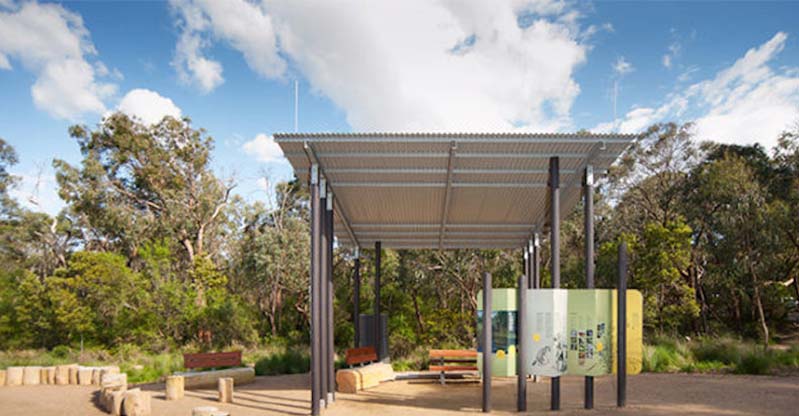
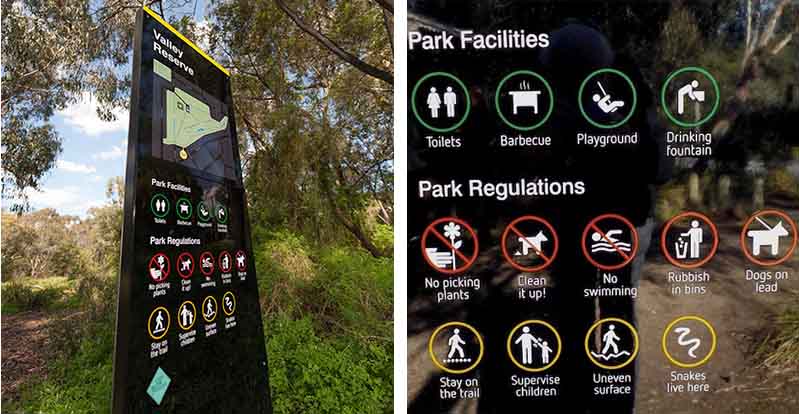
2. Analysis of Key Design Points
Large Freestanding Signage
Visual Identity ability:Constructed with a double-layer steel structure and weathering steel rusted plate, the front features relief maps and animal-plant silhouettes, while the back has replaceable information panels. Equipped with a solar-powered system, it supports LED backlighting and QR code navigation, delivering a dual experience of "natural rust texture by day and illuminated guidance by night".
Material and Craftsmanship: Localized Low-Intervention Practice, Wayfinding facilities are installed without concrete pile foundations, secured by helical anchors and adjustable steel brackets to avoid underground root damage. Wood surfaces are coated with plant-based waterproof coatings, and metal components are hot-dip galvanized for corrosion resistance, ensuring 20 years of maintenance-free use and minimizing disruption to the native environment.
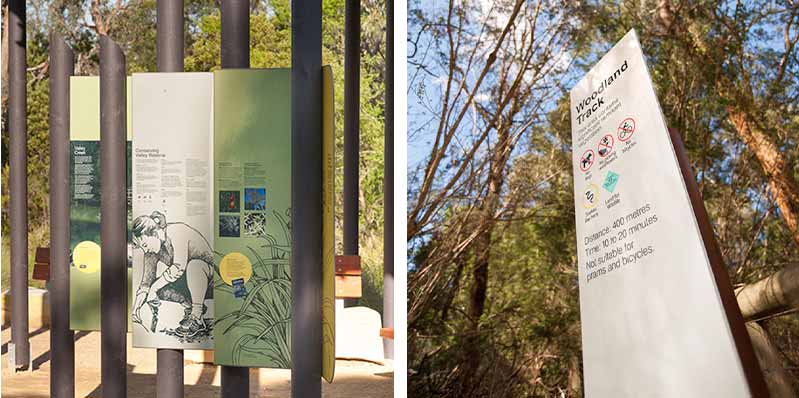
3.Summary of Design Effects
Through innovative designs of core elements such as entrance 3D signage, ecological way finding stands, interactive signage installations, and nighttime lighting systems, the way finding system of Waverley Valley Conservation Area has established a guiding framework that prioritizes ecological value, highlights educational functions, and creates immersive experiential scenarios. From biodiversity conservation to public nature education, it not only optimizes the conservation area's ecological management efficiency but also uses perceivable design language to guide visitors in building a deep connection with nature. It has become a model case of "symbiosis between functionality and ecology" in wayfinding design for urban natural conservation areas globally.
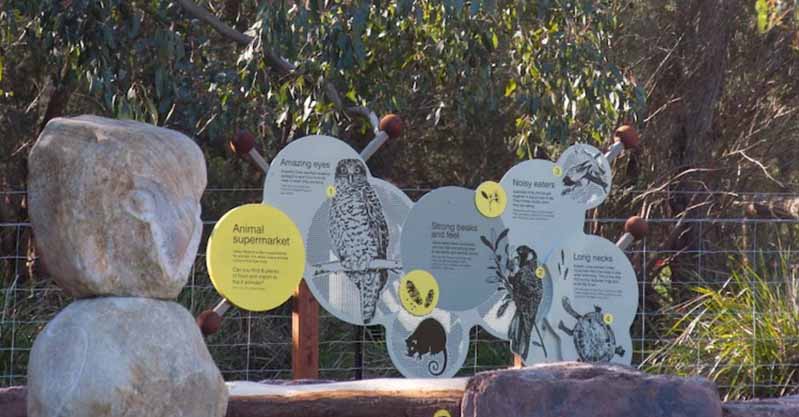
(This article focuses on case sharing and provides an in-depth analysis of practical experiences for you.)
Case Interpretation Designer:
Myra
Publisher:
Charcy
Recruit:
We will regularly find and share global high-quality sign cases,
if you have a better case or project,
you can send it to us, we will share your case with more people.
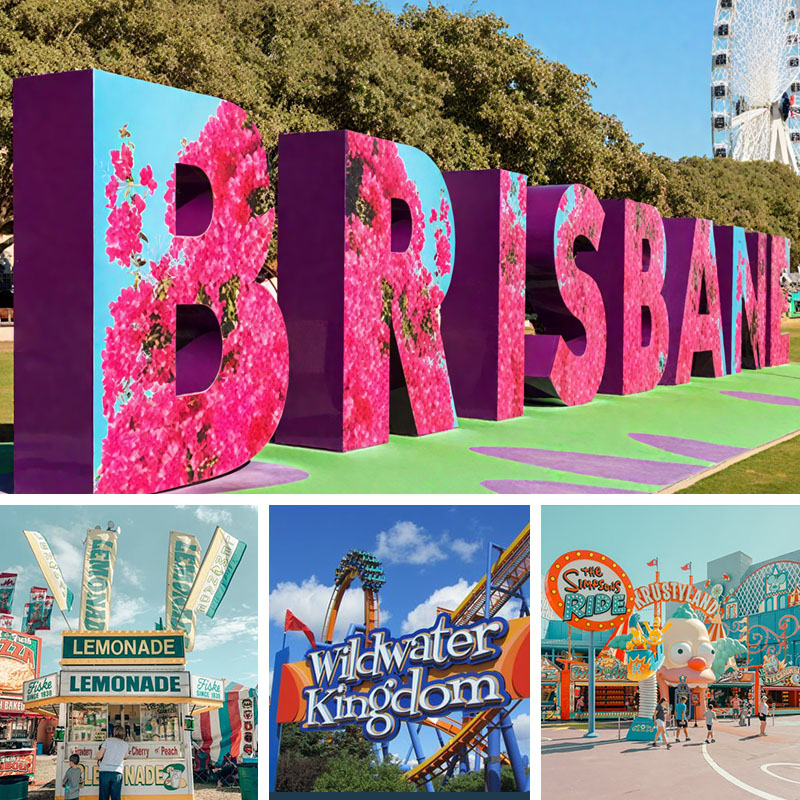 Case Analysis of Way finding D
Case Analysis of Way finding D
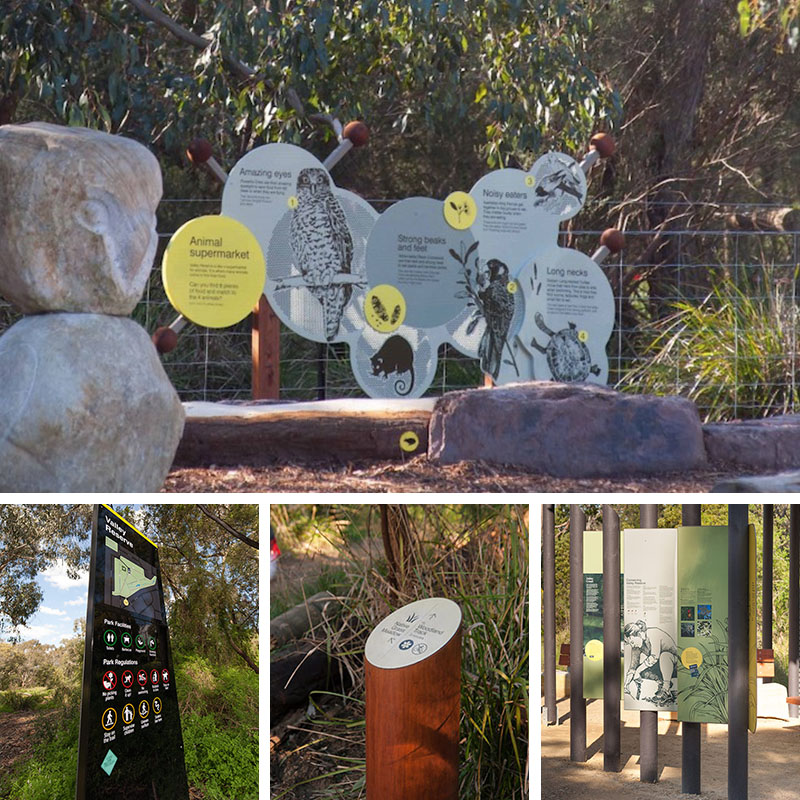 Case Analysis of the Way findi
Case Analysis of the Way findi
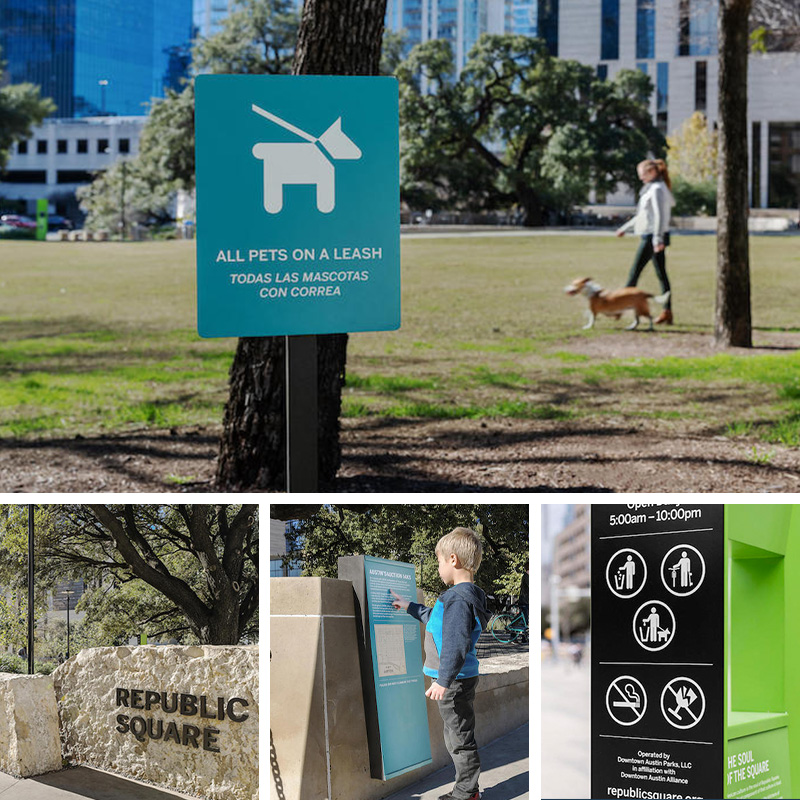 Downtown Austin Wayfinding Sys
Downtown Austin Wayfinding Sys
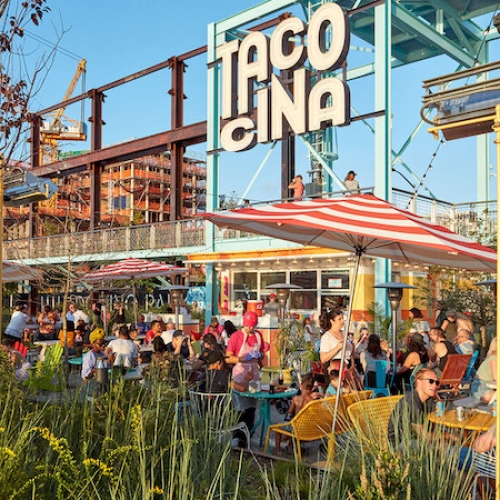 Domino Park Wayfinding System
Domino Park Wayfinding System

